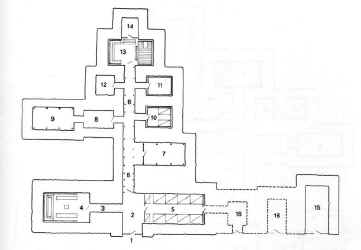
Developments did not necessarily keep in step in north and south, although both regions have much in common. In the 18th century, the bašstofa was the principal dwelling-area of the turf house. As time went on, a real shortage of fuel for heating arose. In many farms, body heat was the only source of warmth. The result of the shortage of fuel, and the increasing cold, was that the members of the household gradually transfered their sleeping quarters from the skįli into the bašstofa. First to move were the master and his family, followed later by the farm workers. This alteration is indicated by the growing size of the bašstofa, while the front parts of the house grew smaller. The bašstofa was moved farther up from ground level, and headroom there was reduced. One may say that the building had come full circle since the Age of the Settlement; people slept, ate, worked and spent their leisure hours in the same room. The bašstofa had taken over the role of the skįli.